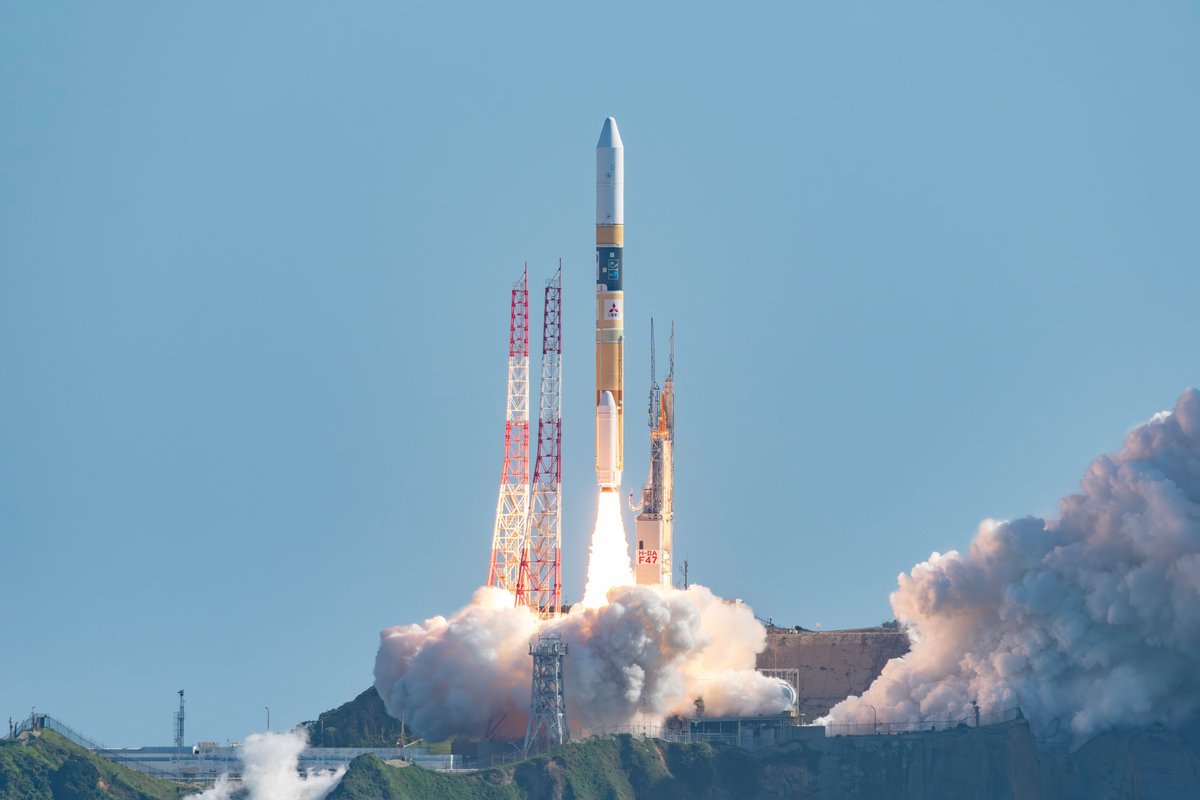
Spacecraft Landing
Hayabusa-2 Sample Returns to Earth
Earth H-IIA 202 | Hayabusa-2
When Hayabusa-2 flies past Earth in December 2020, it will release the capsule spinning at one revolution per three seconds. The capsule will re-enter the Earth's atmosphere at 12 km/s and it will deploy a radar-reflective parachute at an altitude of about 10 km, and eject its heat-shield, while transmitting a position beacon signal. The sample capsule will land at the Woomera Test Range in Australia.
Related Information
H-IIA 202 | Hayabusa-2
Mitsubishi Heavy Industries | JapanTanegashima Space Center, Japan
Dec. 3, 2014, 4:22 a.m.
Status: Launch Successful
Mission:
Hayabusa2 (Japanese: はやぶさ2, "Peregrine falcon 2") is an asteroid sample-return mission operated by the Japanese space agency, JAXA. It follows on from the Hayabusa mission which returned asteroid samples in June 2010. Hayabusa2 carries multiple science payloads for remote sensing, sampling, and four small rovers that investigated the asteroid surface to inform the environmental and geological context of the samples collected.
Heliocentric N/AFalcon 9
Transporter 15 (Dedicated SSO Rideshare)
Space Launch Complex 4E - Vandenberg SFB, CA, USADedicated rideshare flight to a sun-synchronous orbit with dozens of small microsatellites and nanosatellites for commercial and government customers.
Soyuz 2.1a
Soyuz MS-28
31/6 - Baikonur Cosmodrome, Republic of KazakhstanSoyuz MS-28 will carry three cosmonauts and one astronaut to the International Space Station aboard the Soyuz spacecraft from the Baikonur Cosmodrome…
Nuri
CAS500-3
LC-2 - Naro Space Center, South KoreaCAS500-3 is a South Korean Earth observation satellites to be used by the Ministry of Science and ICT for space technology verification and space sci…
Angara 1.2
Kosmos (Unknown Payload)
35/1 - Plesetsk Cosmodrome, Russian FederationNote: Payload identity and Cosmos series numbering not confirmed. Unknown Payload(s) for the Russian military.
Long March 2
Shenzhou 22
Launch Area 4 (SLS-1 / 921) - Jiuquan Satellite Launch Center, People's Republic of ChinaShenzhou 22 (Chinese: 神舟二十二号) will be the 22nd flight of the Shenzhou program. The spacecraft will be launched without crew to replace Shenzhou 20 th…
Falcon 9
Starlink Group 11-30
Space Launch Complex 4E - Vandenberg SFB, CA, USAA batch of 28 satellites for the Starlink mega-constellation - SpaceX's project for space-based Internet communication system.
Falcon 9
Starlink Group 6-79
Space Launch Complex 40 - Cape Canaveral SFS, FL, USAA batch of 29 satellites for the Starlink mega-constellation - SpaceX's project for space-based Internet communication system.
Long March 3
TJSW-21
Launch Complex 2 (LC-2) - Xichang Satellite Launch Center, People's Republic of ChinaChinese classified satellite claimed to be for communication technology test purposes. Actual mission not known.
Falcon 9
Starlink Group 6-78
Launch Complex 39A - Kennedy Space Center, FL, USAA batch of 29 satellites for the Starlink mega-constellation - SpaceX's project for space-based Internet communication system.
Electron
Follow My Speed (BlackSky Gen-3 3)
Rocket Lab Launch Complex 1A - Rocket Lab Launch Complex 1, Mahia Peninsula, New ZealandNote: Payload and customer identities were not publicly announced. 3rd of the BlackSky Gen-3 high resolution Earth-imaging satellites.


